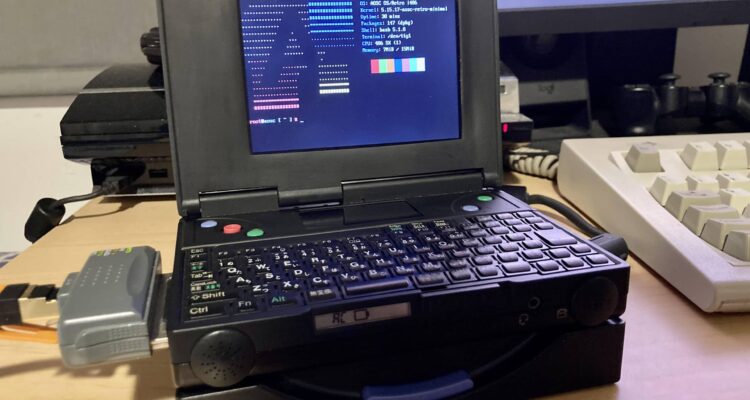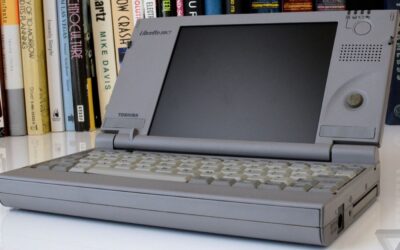In the fast-paced world of technology, where gadgets seem to evolve overnight, it is not often that we get to reminisce about the golden age of past innovations. However, amidst the relentless march of progress, a revival of nostalgia and innovation has sparked excitement among tech enthusiasts with the resurgence of IBM Palmtop PCs. Once considered a symbol of cutting-edge computing, these miniature marvels are making a triumphant return, captivating users with their retro charm and contemporary functionality.
Origins of the IBM Palmtop PCs
The IBM Palmtop PC, also known as the IBM 1100, traces its roots back to the early 1990s when personal computing was starting to take off. Released in 1991, this pioneering device quickly became a status symbol among business professionals and tech-savvy individuals alike. Its compact form factor, ergonomic design, and stylus-driven interface set it apart from the conventional desktop PCs of the time.
Features that Defined an Era

In its heyday, the IBM Palmtop PC boasted impressive features that were revolutionary for its time. With a 16MHz Intel 80186 processor and 2MB of RAM, it could perform tasks like word processing, spreadsheet calculations, and simple database management. The palmtop’s 640×480 monochrome LCD screen provided sharp display quality for the era and, paired with the touch-sensitive screen, allowed for precise input through a stylus.
One of the key attractions was the inclusion of a PCMCIA slot, which allowed users to expand the device’s capabilities with various add-ons such as modem cards, memory expansion, and even early wireless networking solutions. This versatility contributed to the widespread adoption of the IBM Palmtop PC in corporate environments and beyond.
The Modern-Day Resurgence
Fast forward to the present, and a devoted community of tech enthusiasts and vintage computer collectors has reignited interest in the IBM Palmtop PCs. Nostalgia has played a significant role in this resurgence, as many who once owned these devices as prized possessions are keen to relive the experiences of their youth. Others, born after the era of palmtop PCs, are drawn to the allure of retro technology and its unique blend of simplicity and sophistication.
Moreover, the maker movement and a resurgence of interest in vintage computing have sparked a wave of projects dedicated to refurbishing, modifying, and enhancing these iconic devices. With modern advancements in battery technology and display retrofits, the IBM Palmtop PCs have been given a new lease on life, capturing the hearts of both seasoned tech veterans and curious newcomers.
New Innovations for an Old Gem

Although the appeal of the IBM Palmtop PCs lies in their vintage charm, the community is not content to rest on nostalgia alone. Developers and hobbyists are exploring ways to augment the functionality of these classic devices while staying true to their original ethos.
One such example is the introduction of custom-made compact flash cards that offer expanded storage capacity, replacing the obsolete PCMCIA memory cards. Additionally, some tech enthusiasts have designed and built Bluetooth adapters for the palmtops, enabling wireless connectivity and enhancing their practicality in today’s interconnected world.
The Implications for Modern Computing

The revival of IBM Palmtop PCs carries broader implications for modern computing and human-computer interactions. As today’s technology pushes towards increasingly larger screens and more complex user interfaces, the simplicity and elegance of palmtop PCs present a refreshing alternative.
In a world dominated by smartphones and tablets, these miniature computing devices offer an opportunity to reconnect with the basics of personal computing, emphasizing efficiency and productivity without distractions. Furthermore, their tactile input and physical stylus support provide a distinct user experience, fostering creativity and focus.
The golden age of IBM Palmtop PCs has returned, reigniting the joy of retro technology and inspiring new generations of tech enthusiasts. The seamless marriage of nostalgia and innovation has breathed new life into these classic devices, preserving their legacy while adapting them to the demands of the modern world.
As these tiny computing wonders continue to find their way into the hands of eager users, it becomes evident that the appeal of the IBM Palmtop PC lies not only in its historical significance but also in its enduring relevance in a society that craves simplicity, functionality, and a touch of the past. As we look to the future, one thing is certain: the golden age of IBM Palmtop PCs is far from over.



